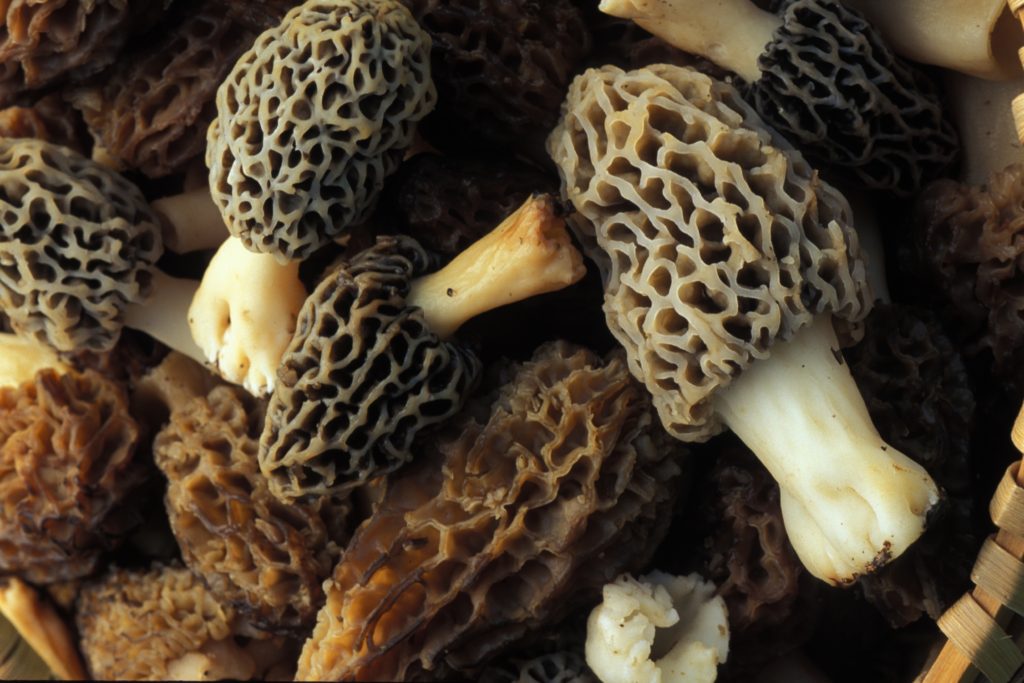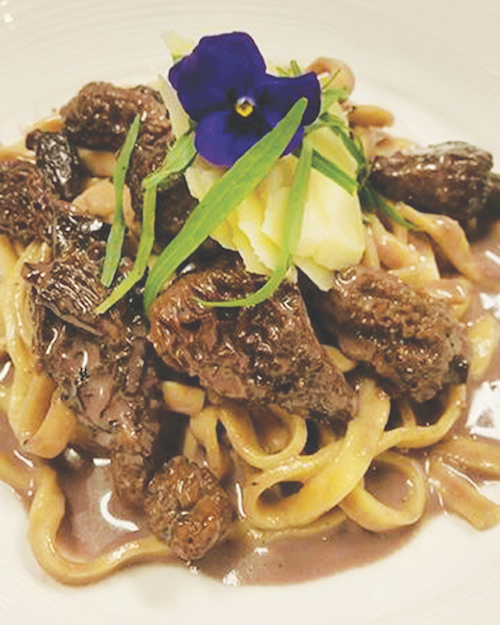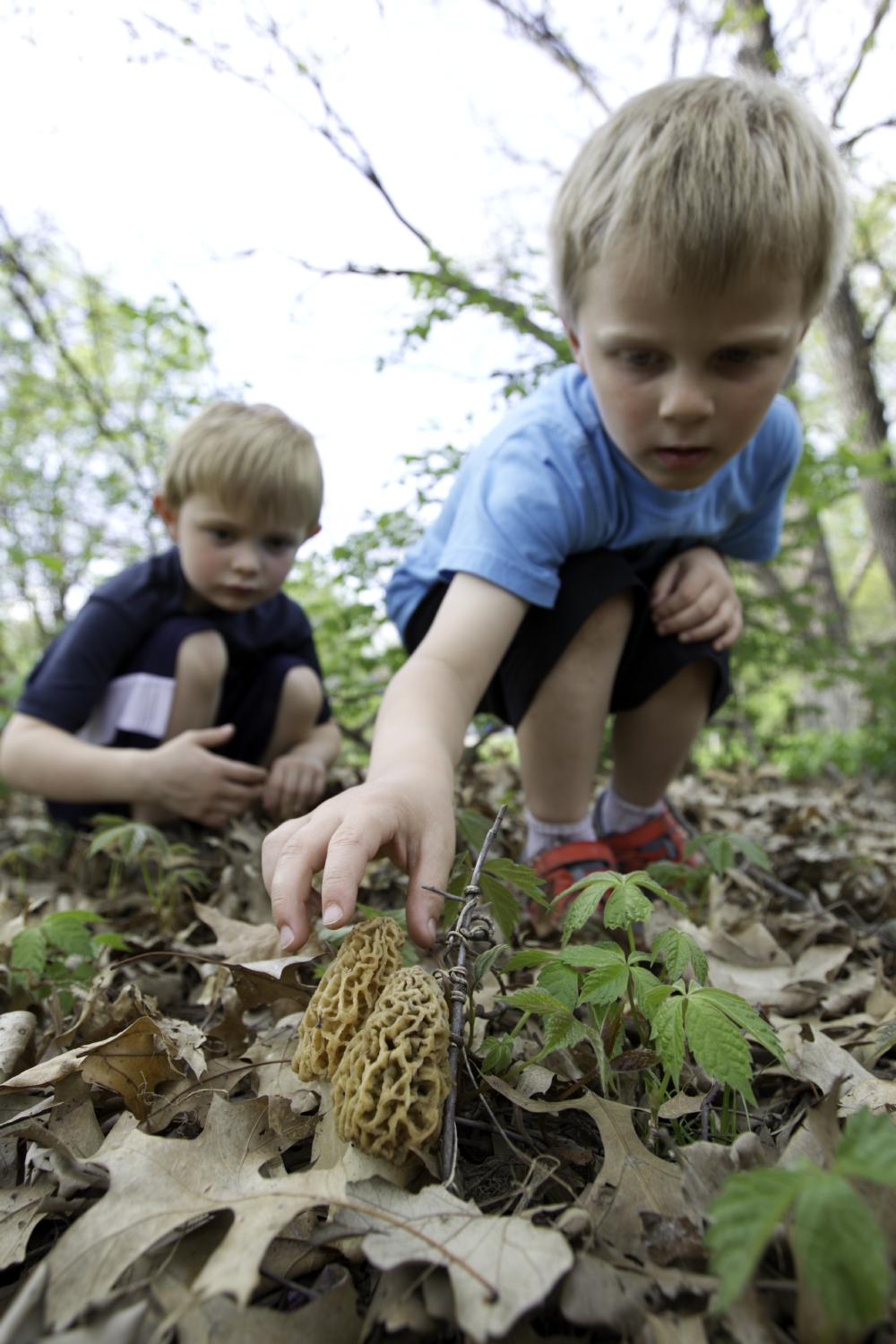
When the weather warms and the moisture is just right, hunters fan out across Missouri in search of spring’s most elusive prize: morel mushrooms. This mystical culinary delicacy is coveted by culinarians and chefs, who gladly pay a virtual ransom for a share of the season’s harvest.
“We never know when we’re going to get morels, but we will definitely secure some when they pop up,” said Ameristar executive chef, Josh Schlink, whose fondness for this fungi’s delicate earthy and smoky flavor is shared by his customers, who are just as anxious for morels to hit the menu.
“Morels work nicely as a first course, especially with a prime steak,” Schlink said. “Last year, we used them in a risotto. We might do that again this year, adding spring peas, asparagus and maybe, some ramps (wild green onions).”

Balaban’s executive chef, Phillip Stemmler, celebrates Missouri’s morel season each year with the restaurant’s signature Morel Mushroom Pasta. The dish, which premiered years ago in St. Louis at the original Café Balaban in the Central West End, features a ruby port cream reduction, fresh black pepper linguine, Parmesan cheese, tarragon and, of course, a heaping helping of morels. Paying homage to the morel, Balaban’s is planning to spotlight it at its May 19 Nickel & Nickel Wine Dinner.
For those wanting to create their own morel masterpieces, it’s time to go on the hunt.
“Morels start coming out in April, and have a season that will usually last through May, with the right weather conditions. And the good thing for novice hunters, morels are easy to identify,” said Missouri Department of Conversation media specialist, Dan Zarlenga, describing morels as sponges that look like Christmas trees. “Morels can vary in color from gray to tan to yellow, and average 3 to 4 inches high. Morels are also hollow.”

Morels are the most coveted Missouri fungi. However, Missouri has lots of other edible mushroom varieties. Once you learn which mushrooms are good, you’ll be able to harvest wild mushrooms spring, summer and fall. The Missouri Department of Conservation can teach the novice hunter how to positively identify them. As Maxine Stone, author of “Missouri Wild Mushrooms: A Guide to Hunting, Identifying and Cooking,” said, “All mushrooms are edible, once. Before eating any mushroom, get them positively identified. Otherwise, you could suffer the consequences.”
Successful morel hunters seldom share where their seasonal stash is found. And that’s OK. As Stone explained, morels can be found almost anywhere where the ground has been disturbed, including parks and woods or your own backyard.
“I know some people that have morels coming up in their gravel driveway,” she said.
Zarlenga offered the most valuable and unexpected hunting tip: Look up, instead of down.
“Look up for the right kind of trees. Morels seem to like elms, especially those that are dying. They also like to grow around white ash or cottonwood trees, and in river beds. Believe me, if the conditions are right, you’ll find them,” he said. “Just think of them as an Easter egg hunt – you know they’re out there, you just have to find where.”
Morel madness is celebrated each year at the Richmond Mushroom Festival (May 2 to 4), the epicenter for Missouri morels, where you can find these savory ‘shrooms without the hunt. Located about an hour west of Kansas City, the festival pairs the fungi with another Missouri favorite: craft beer. It’s a combination city officials claim will provide “FUNgi” for all.
Lucky morel hunters wishing to do more with the season’s harvest beyond breading and deep-frying, can stop by Missouri Department of Conservation’s Power Valley Nature Center for a copy of Stone’s book, which features recipes that include Creamed Morels, which she generously shared with Gazelle.
And don’t forget the department’s field guides that will give you the edge to become a successful Missouri morel hunter.
Creamed Morels
2 tablespoons unsalted butter
2 shallots, finely chopped
2 cups fresh, or 1 handful dried morels
1 pint heavy cream or half and half
2 to 3 tablespoons Marsala wine
Salt and pepper
Melt butter in a skillet over medium heat; add shallots and sauté for a few minutes. If using fresh morels, cut each in half lengthwise to clean and rinse, if necessary. If you have large morels, cut them into smaller pieces, but not too small. Add the morels to the sautéed shallots and sauté for a few minutes. If using dried morels, reconstitute them in warm water. Cut them into pieces, but not too small. Squeeze out morel liquid and save. Add morels to sautéed shallots and sauté. Add the reserved morel liquid, being careful not to add in any sediment that has fallen to the bottom. Continue to cook until liquid has evaporated. Add the cream and cook for a few minutes until mixture thickens. Add salt and pepper to taste. Add Marsala to taste. Makes six to eight servings. Note: These are excellent served as a topping on grilled steaks or chicken.





